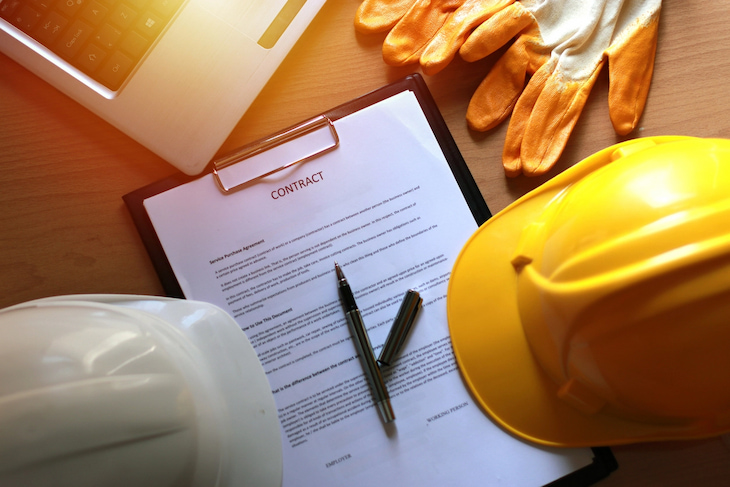In general, as a rule of thumb in the construction industry, there are six basic steps in any construction process. Some of these steps take longer than others and are more complex than the rest, but if you follow the six-step plan, your project will have the best chance of succeeding.
Initiation
The first part of any project, like a building project, is called the “initiation phase.” This stage is also sometimes called the “conception” stage. During this phase, your team will partner with the customer to figure out what their needs are and how those needs ought to be fulfilled.
Depending on how big the project is, you may also want to do a feasibility study or a full business case to figure out if it can be done. Even if you don’t have a formal business case, make sure your project plan includes design sketches so you and your client are on the same page.
Pre-construction and Contracting

Once you and your client have agreed on all the details and signed the contract, it’s time to start pre-construction and focus on a reliable contract administration. This is when you start putting together your team, which may include general contractors, and if necessary, testing your building plans on the ground while laying out the paperwork.
For a construction project to go well, the pre-construction phase is very important. If you jump right into the project execution, you might miss crucial points that could cause the project to fail. Take some time to clarify instead of the important details about the expectation and communication with the client for the duration of the project.
Tendering, pre-contract and contract administration are vital for the construction process. Each project is different from the last because it has its own goals, challenges, and expectations.
On top of that, building contracts can be hard to understand because they have a lot of different parts, so it’s important that the contract has been carefully looked over and written by a professional. Before the building can start, it is very important that all of the stated requirements are met and the final goal is within attainable reach.
Project Execution

Now that you have a perfect plan and construction contract administration set up for your project, it’s time to put it into action. In the project execution phase, your project team and general contractors build your project. Communication is one of the most important things to keep up in the project execution phase.
One of the most common reasons for a project to fail, especially in the construction industry, is a lack of good communication. Think about all the people who have a stake in a building project. Without a clear way to keep everyone in the loop, particularly when people join and leave the project, you’ll never be successful in finishing it on time and on budget.
A clear plan for communication is the first step to good communication, but that’s not all. Make sure that everyone on the team can get important information about the project, such as the lessons you’ve learned in previous phases. When you keep track of your conversations with clients, updates from your team and project progress reports in one place, it’s easy to avoid making the same mistakes you’ve already made. So, you’re more likely to meet your deadlines and stay within your budget.
Commissioning

After the final product has been built, the next step is to put it into operation. The commissioning phase has three steps:
Check if Everything Is in Order
You want to make sure you didn’t forget anything before you give the finished product to your client. Walk through and test your finished work to make sure there are no mistakes. Anything you find on a “punch list” should be written down.
Show Your Client Around
After your internal walkthrough is done, it’s time to show the client the finished look. The client will want to check out the construction site, test out certain systems, etc. It’s your job to fix any oversights as soon as possible, but hopefully, you’ve already caught all of the mistakes and your team is working on it at this point.
Educate the Client on Any Systems Before You Go
Even if you don’t make any mistakes, make sure the client and building manager know how to use any important home security systems so they can keep the building in good shape after you leave. This can include things like alarm software, electricity, plumbing, and more.
Occupancy and Warranty
The client moves into the building during the occupancy and warranty period. You won’t be on-site anymore, but depending on your contract and local or federal warranty policies, you may still be liable for the construction project.
Depending on your situation, there are two types of warranties written out during the contract administration phase: those that are written in a contract and those that are implied. Talk to your legal department to find out what kind of warranty you have and how long it lasts.
Project Closure
The project is finished when the warranty period is over. You’ve done what the client asked of you, but you’re not quite done yet. Hold a project post-mortem meeting to talk about what went well and what could be done better. This will help your team get the most out of the project. Use a shared tool to keep track of what you’ve learned. So, the next time you have a project like it, you’ll already know how to start planning.


















